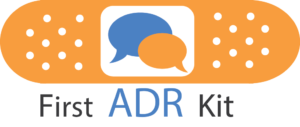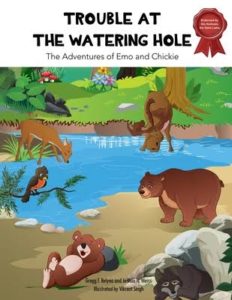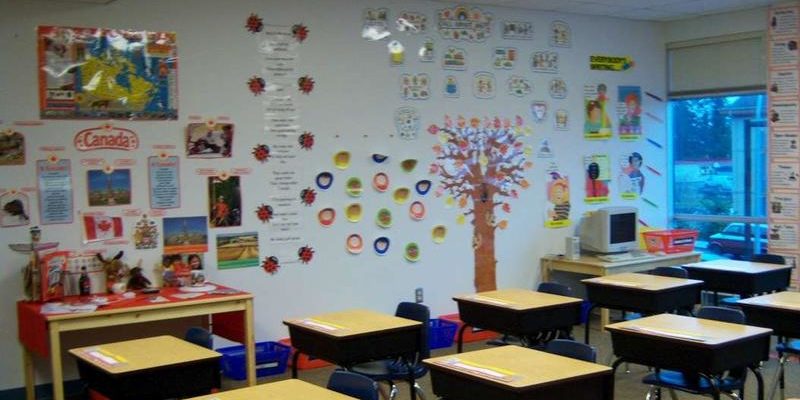Kindergarten and conflict – Pre-school leadership in conflict resolution.
Becoming a devoted Grandma has been a surprising and enriching learning experience for me. The early childhood teaching and learning regime in Australia (and across the world) is truly remarkable and is revolutionising how children engage with the world. An important element of this is the development of specialised conflict resolution programs which encourage children to build repertoire for identifying, engaging in and resolving conflict.

The First ADR Kit, released in 2018 was my first encounter with youth programs – a strategic initiative bringing conflict resolution skills to youth education across Europe. Led by Poland, it is dedicated to learning resources and documenting outcomes via 6 strategic partners from 5 countries.
Exploring further developments in theory and practice
Following this initiative, I began to search more widely for youth programs. I discovered the 2017 publication, Trouble at the Watering Hole from the Program on Negotiation at Harvard. Aimed at the same demographic, it aspires to offer a foundation ‘for kids to learn ways to constructively resolve problems and to build strong skills that can be used to resolve conflict for the rest of their lives’.
 Thinking I had discovered something new, I sent my grandson’s pre-school a copy of the Harvard book for the library and the response astonished me. The Head of the pre-school shared with me the school’s most impressive, child-focussed conflict resolution program. The program used a 3 step process, encouraging children to ask and answer 3 key questions:
Thinking I had discovered something new, I sent my grandson’s pre-school a copy of the Harvard book for the library and the response astonished me. The Head of the pre-school shared with me the school’s most impressive, child-focussed conflict resolution program. The program used a 3 step process, encouraging children to ask and answer 3 key questions:
• What happened?
• What are we going to do to fix it?
• How can we learn from this?
Staff guide the discussion which then encourages children to reflect on ‘how do I feel about it? With support, the children then decide how things will be resolved. Clearly this is a valuable tool for life – encouraging ongoing self-reflection about the impact of conflict on personal wellbeing. The program sits within a broader wellbeing program which includes mindfulness practice. Parents are encouraged to explore the program and practise the tools. Attending a training session where the children demonstrated the tools, I felt a rush of confidence about how these children will face the challenges of conflict.
And then …
Several grandchildren later, I experienced even more cause for optimism (not as a grandma, although that is a delicious experience – but as a conflict professional). Collecting my granddaughter from pre-school earlier than usual I had the pleasure of engaging with her remarkable teacher who asked about my work. She modestly explained that she had also introduced a program aimed at children in their last year at pre-school who were preparing to move on to ‘big school’.
The program has a strong research base drawing on the research and tools of university centres including:
• The Center on the Social and Emotional Foundations for early learning at Vanderbilt University in Nashville (in conjunction with 6 other universities across the USA); and
• Georgetown University Center for Child and Human Development, which uses children’s everyday experiences of conflict as a basis for teaching a simple but effective problem-solving procedure. This is supported by simple cue-cards whose visuals encourage children to brainstorm solutions.
Key elements of the program
The program has a number of really interesting elements that are child-centric versions of adult dispute resolution training and some of them seem more attractive and accessible than the adult version.
My key take-aways are:
• Learning to understand their own emotions and the emotions of others and to recognise the value of calm behaviour;
• Reflecting on how others see things;
• Encouraging collaborative problem solving;
• Sharing positive narratives; and
• Scrutinising the positive value of kindness and what kindness is in the giving and receiving space.
These elements come together in the role of the Problem Solver who, supported by a teacher, plays a kind of mediation role via a number of well thought-out steps. As conflicts arise in the playground, students get the opportunity to take turns as the Problem Solver and learn skills of:
• Asking each party to explain the problem without interruption;
• Acknowledging the feelings of each party;
• Reviewing options for a solution (supported by cue-cards); and
• Encouraging parties to agree on an option they can live with.
Following resolution, the outcome is presented to the entire student group by the Problem Solver who encourages group members to engage in brainstorming other possible solutions.
This has been a remarkable educational adventure for me and I have a new sense of confidence about what the next generation is going to teach us about conflict resolution. To return to the musical themes of some of last years’ blogposts it is certainly ‘What the World Needs Now …’
________________________
To make sure you do not miss out on regular updates from the Kluwer Mediation Blog, please subscribe here.




Such interesting and important work. Imagine if we had all grown up developing the skills of the Problem Solver in the classroom!
Hi! I found your blog on the web and I think it’s fantastic. Thank you for posting these articles with us. I’m looking forward to reading more of your best content in the future. I’ve also followed the Preschool Kindergarten Singapore Little Atlas preschool if you’re interested and check it out! It’s very informative and engaging.
I am delighted you found this useful. Thank you for your link – I will certianly follow it up.